10. It Gets Bigger — Way Bigger
Antarctica’s sea ice is expanding in some regions and decreasing in others. Wind affects what happens in different areas — for example, northward winds blow massive chunks of ice away from the continent, and that’s one way it loses volume. Antarctica’s frozen seawater is increasing, while glacial ice that comprises the Antarctic ice sheet is diminishing.
These regular fluctuations in size hardly compare to Antarctica’s growth in the wintertime. The continent has approximately 4.5 million square miles of land, and during the summer it’s surrounded by about 1.1 million square miles of ice. In winter, this number grows to approximately 6.9 million square miles. To help put this incredible seasonal change in perspective, consider that Europe covers about 3.8 million square miles. This means that every winter, the ice mass surrounding Antarctica is significantly larger than the entire continent of Europe.
9. It’s a Spectacular Spot for Collecting Space Debris
Antarctica has the ideal environment for collecting meteorites. In most terrain, dark chunks from space blend with the land. Debris goes ignored, becomes covered by nature or is mistaken for everyday rock. However, the snow and ice of the white continent offer stark contrast against space debris that’s fallen to the ground, making it easy to spot.
The icy environment is also useful for preserving meteorites — many we’ve found are millions of years old and still intact. Natural ice movement, combined with strong winds, often pushes several of them into common areas that are hotspots for collectors and scientists. Traveling to Antarctica to gather meteorites is much more cost-effective than venturing into space. The United States Antarctic Search for Meteorites program has been in place since 1976 and collected nearly 16,000 meteorites so far.
8. Annual Marathons Are Held There
Despite housing zero permanent residents, Antarctica has two major marathons. The Antarctic Ice Marathon takes place at the base of the Ellsworth Mountains and has been running since 2004. Participants fly in on a private jet from South America to run over snow and ice, where the average temperature is between 0°F and 10°F, and the average windchill is -4°F. Wind typically blows from 10mph to 25mph, but runners could face strong katabatic winds and other unpredictable obstacles. All of this occurs at an average elevation of 3,000 feet.
If the Antarctic Ice Marathon isn’t your frozen solid cup of tea, you can run the less demanding McMurdo Marathon instead. It takes place on the Ross Sea ice shelf, and workers at the United States’ McMurdo Station research center often participate. Simply reaching Antarctica is quite a challenge though, and whether marathoners will even be able to arrive will always depend on the weather, which can be extreme and unpredictable even in summertime.
7. The Peninsula is People-friendly
Tourism opportunities abound in Antarctica. You can cross the Polar Circle, walk through penguin colonies, retrace the steps of early explorers, cross Iceberg Alley, scuba dive, whale-watch, hang out at McMurdo and do much more. The number one draw for tourists remains the stunning Antarctic Peninsula, also known as the Banana Belt. It’s popular for its accessibility and mild climate, and average yearly rainfall is similar to that of Denver, Colorado. The Banana Belt is jokingly seen as tropical compared to the rest of the continent, hence the name.
The Antarctic Peninsula is the northernmost and wettest area in Antarctica. It’s a breeding ground for seals and penguins, and surrounded by some of the most pristine and majesticscenery in existence. Cruise ships transport an average of 35,000 tourists there every summer. That’s miniscule compared to most tourist destinations, but negative effects of tourism on the natural environment are still a valid concern.
6. Antarctica is Fairly New to Us
British captain James Cook sailed into the Antarctic Circle in 1772. He didn’t see land, but the immense floating icebergs clued him in to the harshness of the environment. Explorers spotted land and began exploration in the early 1800s. Seal-hunting drove many of them to risk their lives in Antarctica — American Captain John Davis traveled to the peninsula to hunt seals in 1821, and he may have been the first to land on the continent.
No one reached the South Pole until 1911. Roald Amundsen of Norway led the first successful expedition. The man who attempted it before him, Ernest Shackleton of England, had to turn around when he was only 97 miles from his final destination. Brit Robert Scott reached the South Pole a little more than one month after Amundsen, but extreme weather prevented his party from ever returning home. The risks didn’t stop more explorers from visiting Antarctica, and as more and more nations planted flags questions arose over ownership.
5. Most of the Land Has Been Claimed
Naturally, when new land is discovered countries want to claim it as their own. We’ve made an exception in Antarctica — nations of the world share the land and cooperate with each other for the purpose of scientific exploration. Seven countries have claimed parts of the continent, but people from all over the world are still welcome and only a small number of nations take claims to Antarctic land seriously.
Three countries — Argentina, Chile and the United Kingdom — have claimed part of the same land and refuse to recognize each other’s claims. Other nations that have declared a slice of territory as their own include Australia, France, New Zealand and Norway. TheAntarctic Treaty helps promote peaceful cooperation — signed in 1959, 51 countries now agree to its terms.
4. The Continent is Comparable to the Sahara
Antarctica is a polar desert. It’s the highest in average elevation, the windiest and the driest place on the planet. The lowest temperature ever recorded was -128.6°F in 1983 at Russia’s Vostok Station in East Antarctica. 98% of the land is covered in ice, which comprises approximately 70% of Earth’s freshwater. Though the average thickness of this ice is 7200 feet, the East Antarctic Ice Sheet reaches 15,700 feet. That’s nearly three miles!
What makes the continent especially similar to the Sahara is its dryness — average precipitation levels are extremely low. It’s so cold that snow or diamond dust usually falls from the sky instead of rain, and that’s only in the areas where precipitation actually falls. The interior sees an average of one inch of precipitation annually, and elsewhere scientists claim rain has been absent for two million years.
3. It’s Home to Blood Falls
In McMurdo Dry Valley, a sub-glacial lake empties from Taylor Glacier. The water pours from almost five stories high into Lake Bonney, but this is no ordinary waterfall. The source is three times saltier than seawater and flows below an ice sheet that’s a quarter-mile thick. The salt keeps the water from freezing, even in the Antarctic’s worst temperatures. This incredible water source formed approximately two million years ago.
Even more intriguing is the color that gives this natural wonder its name: Blood Falls. The water source contains zero oxygen and hasn’t been exposed to sunlight. Its high iron content, along with microbes that survive on the water’s iron and sulfur, contribute to the unique color. If it’s something you want to see for yourself, Blood Falls can be reached by helicopter or cruise ship.
2. Life Finds a Way
Invertebrates such as nematodes and mites survive on Antarctic land, while microbial life survives in lakes. Some have evolved to produce antifreeze for themselves when it gets too cold. Fauna is limited and tends to cling to the ground, where less wind will hit and dehydrate it. Life is more diverse on the sub-Antarctic islands and underwater — thick ice works as an insulator that supports local marine life.
Penguins, seals, sea lions, whales, squid and krill are some of the many animals that thrive in the Antarctic environment. Birds such as petrel, albatross and skua fly about the milder regions. The snow petrel defends itself by projecting putrid oil from its stomach, and if this oil comes in contact with another bird the bird will freeze since the oil destroys the protective layer of feathers. Skuas are one of their natural predators, and they’re not much liked by petrels or people as they’re notorious for dive-bombing humans and stealing food.
1. Antarctica Was Once Tropical
Scientists drill into the land and remove cylindrical cores so they can study how the land has changed over time. From this we’ve determined that palm trees and other vegetation once thrived on the Antarctic coast. Higher carbon dioxide levels and warmer oceans allowed for a tropical climate an estimated 52 million years ago.
Father inland, the land featured temperate rainforests, with plant life including the araucaria tree that’s now native to New Zealand. Scientists also found evidence of macadamia nut and baobab trees, which is the thick “tree of life” currently thriving in Madagascar. Now the whole continent is a polar desert — it makes you wonder what your home might be like in the future, and whether places like Antarctica could eventually harbor diverse life once more.

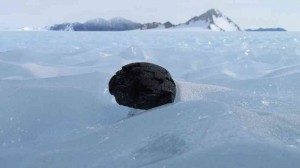
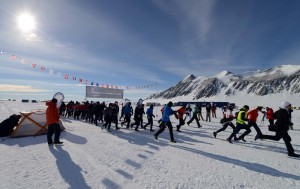

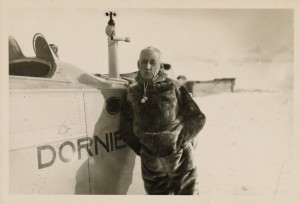
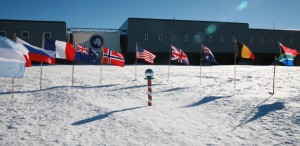
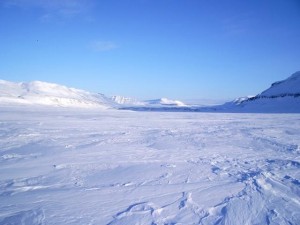



0 ความคิดเห็น:
แสดงความคิดเห็น